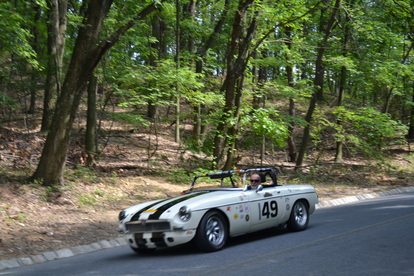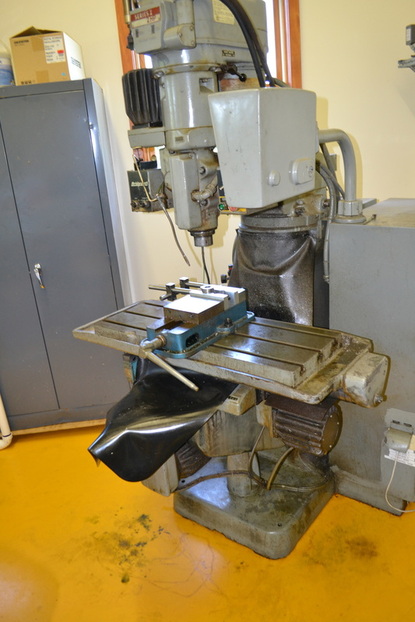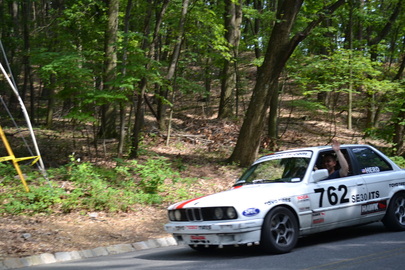As I went up the hill, at the last instant I decided to swing wide going into turn 3, rather than hug the inside like I had been doing all weekend. This threw me off a bit and I got on the gas too early. The tail stepped out a bit, but I caught it. Rather than give up, this helped me focus on putting together a clean run the rest of the way up the hill. I figured all was not lost with this minor delay. I went flat through turn 5 and carried my speed very well. The tires started to chirp and the car began dancing. Great, I was at the limit, but didn't run out of room on turn 5's exit onto the mountain "straight." Screaming down the straight, I tapped the brakes and got back on the gas turn turn 6, also known as 'oh shit.' I was flying into the braking zone for turn 7, got the car slowed down, and managed a snappy 4th-2nd downshift. So far so good. I ripped through 7, 8, and 9, and hit 10 (the Pagoda) fairly well. I kept my foot flat over the kicker into turn 11, and the tires were chirping again as I COOKED through 11. The car held on and I kept it flat through the final uphill straight. I tried to straighten out the lines as much as possible to cut off any unnecessary distance. In doing so, I hit a big dip next to the timing relay tower. As I screamed through the finish, I began shutting down. It was only then that I noticed an unusual noise. Hmm ....
Checked the brakes, no problems there ... steering is good, the car isn't that noisy. Any louder than usual, that is! Still shutting down, I check the oil pressure & temp. Everything is good. Hmm. If the exhaust was dragging, wouldn't it make more noise? Ignorance is bliss! I drive down to the turnaround, still making noise. I bring it back and get a look from the other drivers when I get to the grid at the top. "I know!" I shout. Jump out and look underneath. Sure enough, I'm dragging my muffler, but it's still attached! Thanks to some leather gloves, I hook the muffler back onto the exhaust donut. Looks like when I hit that dip, the muffler jumped out of the donut! Wow!
When I finally get to the bottom at the end of my group, I heard the good news about my time. Surprising how much faster I was. I'm now less than 2 seconds behind the class record, set in 2000! I picked up 7 seconds over last year. Not too shabby! Amazing what a new set of tires and a chip will do! Practice doesn't hurt either. I think the car has the final 2 seconds in it, I just need to drive it better. Jason and I are now 2 and 2 in every event we've gone head to head. Both Fall Jefferson and Fall Weatherly should prove interesting. I'm optimistic because I only lost by 0.110 at Spring Weatherly and didn't yet have new tires and a chip. Jefferson should also go well because the car is in its element on flat tracks. I can't wait! I expect both records to fall with a crash!



 RSS Feed
RSS Feed
